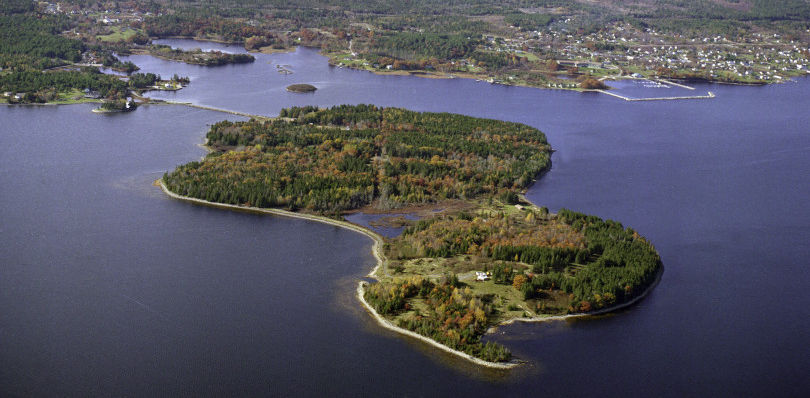top of page

OAK ISLAND

CHRONICLES OF THE OX
I was born on a cool day in April of 1961. It seemed I started to receive training about oxen the very next day. Dad, and my uncles, Ted and Norman, were great “ox fellers”. I enjoyed learning and working with oxen during my youth. We used oxen as draught power until the mid 1980s. When a day’s work was done, we ate supper, then sat around the kitchen talking about, you guessed it – oxen; the only interruption being the playing of “Auction 45s”, a popular card game here in the Maritimes. It was pretty much a culture of oxen. Oxen seemed to care; machinery didn’t. Oxen are very intuitive. If properly cared for and trained, an ox, used by himself or as part of a team, will synchronize his actions with the teamster. If a teamster is lazy and just wants to saunter along getting little work done, oxen will act the same. On the other hand, if a teamster is alert and energetic, oxen will exhibit the same qualities. Oxen are much cheaper than machinery. Paying several thousand dollars for machines that depreciate and wear out may not make as much sense as obtaining oxen for far less, especially in regions economically depressed. A team of two oxen can go places that machines cannot due to the former’s ‘eight-legged drive, articulated traction’. Also, Dad had a Jersey/Hereford cross bred ox that would ‘drive’ himself in the woods. Is there a machine yet that can do that? Repairs for machines can be very expensive, whereas oxen are usually sturdy, healthy animals, even more so than horses, given proper nutrition. I knew the reverence owners had for their oxen. On a cold winter night, coming out of the woods in deep snow with a big sled load of logs, oxen plodding along faithfully, the owner huddled in warm clothes, perched upon the front of the load, gains respect for these beasts of burden. It was not so much our great-great-grandparents that developed the land, but the oxen they drove. Oxen were instrumentally important in developing, not only North America, but the world! Oxen logged the forests, cleared the land, ploughed the fields, cultivated the crops, reaped the harvest, and transported the goods. They built roads, dykes, and dams. They erected forts, homes, barns, mills, and bridges. They supplied stationary power, launched ships, and hauled boats up and down rivers. They effectively allowed settlers to establish their communities all the while surviving on meagre forage in harsh conditions; finally, giving their lives for meat and hides for our pioneering ancestors’ benefit. Yes, they are magnificent animals much revered to this day. In 2002, I started working for a living history museum that uses oxen. This provided a means for me to explain the history, importance, lore, and use of the ox. It’s apparent that many people are fascinated by oxen, but few know anything about them, especially how to care for them, train them, and use them. It is for this reason that I, in 2010, the 400th anniversary of the arrival of the ox to our shores, wrote “Oxen: Their Care, Training, and Use”, a how-to book to enlighten those who wish to learn about oxen. Hopefully, the book, and this section of the website will comprehensively chronicle most aspects pertaining to oxen, including celebrated stories. Most of what is contained in the book, and relevant articles herein, is meant as a guide. Different teamsters will, undoubtedly, have varying opinions on how oxen are trained and used, but these articles, and the book, will endeavour to give the basics of oxen husbandry. If possible, the various procedures should be carried out with the tutelage and supervision of a respected, experienced teamster who has worked with oxen for several years; someone who can teach you the numerous aspects of training, both the ox and yourself. Safety is always paramount when dealing with oxen. They are, for the most part, docile, but extremely powerful. Even a small calf can hurt you, if, for example, it kicks you in the shins. But generally, dealing with oxen is a gentle, rewarding experience. It links you with the past, the natural surroundings, and existence with animals. The book, and this website section is my homage to the ox and the teamster.
Enjoy their stories!
bottom of page